
In the legends of New Zealand's Māori people, Hine-nui-te-pō is the goddess of death. She dwells in Rarohenga, the afterlife, securing the souls of the dead in their eternal resting place. Hine-nui-te-pō's is also known as the Dawn Maid, and her home is shaded in the warm colours of the sunset sky above it.[1][2] The Māori word for "red sky" is "umurangi".
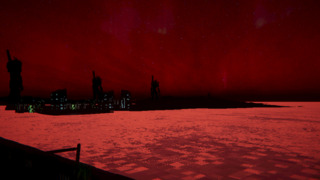
Umurangi Generation is a 2020 shutterpunk game developed by Origame Digital, principally by Naphtali Faulker, a member of the Ngāi Te Rangi Māori tribe from Tauranga, New Zealand. The game slowly illuminates an apocalyptic future Tauranga, cast as the theatre of a war between monsters that can level entire cities and a dwindling humanity. But in Umurangi Generation, we're not a soldier, we're a photographer with a list of subjects to snap. For completing jobs, we earn new lenses and image processing features for our camera. Sometimes we turn our eye towards documenting the war, but other times, our film serves as a web in which we catch pictures of Tauranga's scintillating street culture. Because Umurangi Generation has us etch imprints of both military and civilian life, it makes us an anthropologist focused on art and performance in a time of catastrophe.
Some of the art you find in this city is propaganda or, at least, propaganda adjacent. There are unconvincing enlistment posters and adverts for high-budget action media glorifying gung-ho militarism. Perhaps you'd like to play a session of Indiscriminate SWAT Officer or tune in to Assassin Sniper Shooter Killer, "He's pissed, retired, and American". Given that the kaiju are pushing humanity to the brink of extinction, you might expect the game to support the army fighting them unconditionally. However, Umurangi has a more nuanced view of forces claiming to oppose existential threats. In this world, the United Nations combat the colossal monsters, but they do it while making urban population centres occupied territory. Graffiti, news reports, and posters suggest the UN has been negligent in its duties, leaving millions homeless, committing substandard repairs, and acting as a hurricane of collateral damage.
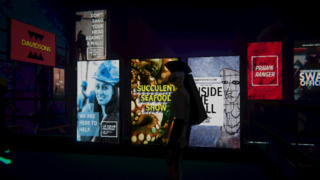
Other imagery suggests more ambiguous treatments of war and authorities. The documentary Let's Play: God calls for government oversight of a company conducting genetic modification to bring back an extinct species. And yeah, companies probably shouldn't be able to play fast and loose with DNA without some accountability, but the film is also making the case that extinction shouldn't be reversed, and there's no morally justifying that. The Day the Earth Died is a movie that could provide some helpful insights into the current apocalypse, but one quote on the poster says, "Basically I'm smart now". It informs us that some people are using the film to smugly posture that a couple of hours in front of a movie screen has made them experts on global catastrophe.
Streets and plazas further play host to signs stacked atop signs like you'd see in an Osaka back alley. Through these towers of backlit plastic, your senses are hammered by a strobing supercut of businesses. The city feels overstuffed with arcades and restaurants all vying for your attention, desperately trying to distract you from the hellfire above. And then there's the street art, some of which forms a kind of modern folk art. Young punks take a break from daubing the walls with neon dye to dance to murky hip hop. Gearheads lean against the dazzling wraps of their sports cars. Your friends have thrown some wooden palettes and tires into a swimming pool.
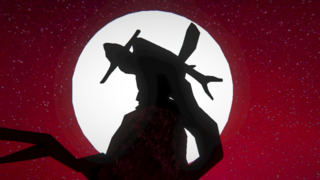
In contrast, the concluding level of the game is decidedly unmodern. It's called "Final Delivery", and in it, we trek through a rocky, half-submerged plain, souls rising into the air like heat. Starry ancestors stare up at the red sky, and a fearsome serpent sits on a pillar of stone far out in the water. We photograph it and exit to the credits, which say the game is "Dedicated to the Umurangi Generation. The last generation who has to watch the world die." The name "Umurangi Generation" tells us that the society that our friends and we are part of is intrinsically linked to the red sky and, therefore, a sunsetting and the goddess of death and the afterlife. We see what appear to be Māori spirits on the ground, and in the face of one of the destructors of the world, our last delivery is of our soul to the beyond. We are on our way to Rarohenga, or perhaps we're already there. The creature may even be Hine-nui-te-pō; legend says that the goddess made her home on one of the outermost islands of the world.[2]
I think most of us don't imagine that there could be car meets, nightclubs, monster movies, or freelance photography at the end of the world. We think that media and parties are too frivolous to catch peoples' interest when armageddon is on the horizon, but Umurangi Generation argues for a different conception of how people respond to a crisis. Photography has long been instrumental in reporting war. Not to say it always transmits the unfettered reality of the conflict; states and media often have an interest in redacting details that cast them in an unflattering light. In Umurangi, you have your pay docked for snapping the tiny jellyfish strewn about Tauranga. These invertebrates are presumably connected to the monsters somehow, making their ubiquity taboo. But the point is we expel a flood of media, and both historically and in the modern world, even people in the direst and most threadbare circumstances created and played.
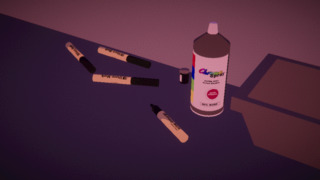
The recreation and art in this speculative New Zealand serve the same purposes they have everywhere and everywhen else: to garner support for the authorities. Yet, also to allow people a distance from those in power or from aspects of their lives they'd go mad over if they reflected on indefinitely. In the Macro DLC, there's a level set in the underground bar "Gamer's Palace". At some point, you're going to come up from the arcade for air, and when you do, there's no music, only a looping public announcement about lockdowns blaring out onto the street. The remorseless chyron of a nearby TV tells us that one billion are dead. It's a relief to return to our waifu bunker.
Art and performance also help individuals feel alive when their continued existence is not guaranteed. If you don't know whether you'll wake up tomorrow, you better make the most of life today. It might be that during the fall of a society, people would have more reason to dance, produce music, and draw pentagrams than ever. Additionally, these art forms are self-identification for people whose personhood is not respected. There are plenty of punks hanging out in this version of Tauranga, and it helps to remember that punk was not just a reaction to the increasing callousness of establishment politics. It was also about a youth that felt unseen styling themselves to be impossible to ignore. When society tried to turn away from a generation, that generation recaptured attention with coloured hair dye, spiked jackets, and casual vandalism. In Umurangi Generation, they do so again. In this game, we find fun and creativity to be a way to both escape conflict and reconnect with it.
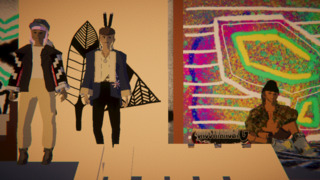
We, the players of the game, are also people who have hobbies and luxuries during an era of mass extinction. Arguably, it's the same mass extinction as we live through in Umurangi Generation. An advert for the film The Melting Ice suggests that the kaiju were freed from under the shrinking polar ice caps. Umurangi's world ends due to climate crisis, and if we don't change course, so will ours. Antarctica loses an average of 150 billion tons of ice per year. Greenland, an average of 270 billion tons.
But there's only so long you stand paralysed, mouth agape at that carnage. Life goes on, and life includes dancing, decals, and DSLRs. And whether or not it's doomsday, you've still got to eat. The play reminds us of it with our delivery deadlines and pay that is algorithmically calculated per photograph. That dollar amount is always arbitrary; there's no maths you can crunch to tell you the emotional weight of a photo or how truthfully it explores its subject. The reward scheme satirises how the commodification of art necessarily means trying to quantify quality.
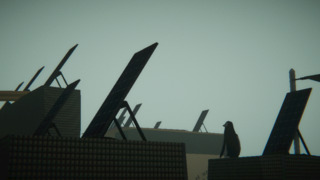
You end up in absurd situations where the programming must calculate whether a photo with a wide-angle lens is better than roughly the same one taken with a telephoto lens or if a landscape commands a higher price based on whether or not it has a tent in it. ART SQOOL similarly pointed out the lack of a sensible basis for "scoring" art, but Umurangi couches the observation within a socioeconomic context. Although, in this experience, neither your financial needs nor the war ever get in the way of your photography. Gonzo shutterbug seems to be a lucrative enough career in this future, and this is the flavour of game that expects you to go stumbling off a rooftop or into a pile of electric goop so often that it resets you without even a "game over" screen. Umurangi Generation is the kind of parent that would let its kids play in traffic.
It could stringently prescribe a code of conduct with harsh punishments if you deviate from it. But because it doesn't, it approves an extensive assortment of play styles. If you want to be a casual sightseer, finish the game, and never boot it again, you can do that. If you want to speedrun through wartorn Tauranga, finding satisfaction in turning in your deliveries when your commissioner has only just seen you out of the door, you can do that. If you want to take the largest slice of the photography work available and complete all the objectives, you can do that too.
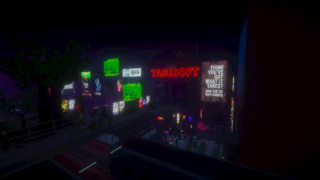
Routing within levels is also highly malleable. We often get into the habit of describing the linearity of games purely through their top-down structures (e.g. Calling them open-world). When we do that, we forget that narrowness and openness also exist within stages and not just between them. For example, many open-world games still have levels with ordered objectives: that's linearity. "Linear" is not a synonym for "bad", and "open" is not a synonym for "good". And you can have a lot of meaningful options in a level with scripted and exclusive top-down goals. Still, Umurangi Generation is proof that a game can have the level order be designer-defined while the structure of the objectives within stages is player-defined.
The level design in Umurangi Generation has a glimmer of Tony Hawk about it. Both give us a list of goals, some of which we can complete through cumulative interactions with various level elements (e.g. "Score 10,000 points" or "Earn $80") and others of which we tick off by touching base with specific entities (e.g. "Grind the Molten Bucket" or "Take a photo with at least two cats in it"). Although, in Umurangi, even the latter kind of objective, we can often complete through multiple approaches. If a level has many cats in it, there are plenty of angles from which you can photograph two of them. If the Mauao mountain is visible from multiple points on the map, you have a choice about where you take your shot of it from. How could a game about art have one correct answer to its puzzles? Naphtali Faulkner, the lead dev on Umurangi, describes the software as following principles of "Respectful Design", a style of design devised by Aboriginal professor of Humanities and Social Sciences, Dr. Norman Sheehan.[3] Respectful Design is a school that aims to achieve decolonisation in its field.
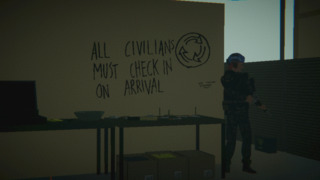
Colonialism is not just the act of creating and running colonies: it is the set of beliefs that motivates and is used to justify that invasion and domination. The ideology is as much a means to colonise as ships or governments are. Colonialism fundamentally denies the agency and worth of the communities it invades. It imposes an authoritarian outsider vision of how the society should be run by characterising the colonist's values as superior to the existing order. Umurangi hints that this is what the UN is doing in Tauranga, but you can also argue there are parallels between colonialist thinking and the popular design ethos in games. Video games traditionally involve a developer coming into our home and telling us what to value and how to complete tasks.
Using the Respectful Design template, Faulkner bucks this trend, providing a game that lets its community decide, in his words, "how they want to take photos and what is a good photo".[3] This freedom to fold the game's paper into whatever shape you see fit is implied by the developer's name: Origame. Umurangi's fluid gameplay philosophy doesn't just accommodate general preferences but also, potentially, cultures. For example, if you adhere to a culture that tells you to work gradually and perfect your craft, Umurangi will validate it. But the game is equally validating of actions based on a background of quickly following instructions as they are designated. It also respects a desire to use it as a platform for creating art.
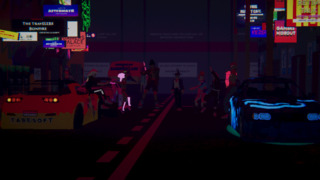
In the popular mindset, photography is about capturing what's already in front of you rather than creating an original image, but Umurangi makes the case that it's a bit of both. The photo you get is the sum of your physical positioning, lens, camera settings, and how you edit the image in post relative to the sights before you. Although the game doesn't mention it, even what we see with the naked eye is a result of our bodies' unique construction, including the nature of our eyes' lenses and how our brain interprets colour. It's why two animals looking at the same scene can see something different. So, there's no default version of any picture, meaning that not only can photographers make creative choices in their art, they must do so.
The game gives extensive thought to helping us make those decisions. The most ambitious photo modes in gaming include many of the features available on modern cameras and in professional editing suites. But with so many properties of an image to consider at once, I've frequently found it overwhelming to use these editors. And what's the point of an option if you never end up using it? Umurangi doesn't just include image editing features like white balancing, bloom, and saturation, but supports you in decoding its menu and working out what changes to images are meaningful to you. It introduces you to its photo options the same way most games introduce you to their mechanics: building them out a bit at a time. Because you start with one lens and only a few elements to tweak in your photos and add to your collection as you progress, you have ample time to experiment with each new tool under your belt. You get to learn what they all do in isolation before you put them together. You can even open up your gallery folder and get that realistic experience of deciding which pictures to keep or publish and which to axe.
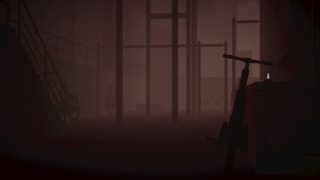
Within the context of Umurangi's war, taking shots with an SLR rather than a gun occasionally leaves the exercise feeling ineffectual. In the level Contact, I found my friend clutching an assault rifle, crouched terrified behind an emplacement, and instead of grabbing a gun and hunkering down beside him, I just lingered there snapping pictures. But one of the game's lessons is that, in the long-term, photography can be means of empowerment.
In the real world, we can feel like we're helpless in the face of titanic forces destroying what we care about, that all we can do is stand and watch as our houses collapse. Umurangi Generation offers a hand on our shoulder and gently says that through photography, observation can become an active rather than a passive exercise. That just seeing something is an opportunity to make statements about how you perceive your surroundings and what kind of social environment you live in. Cameras have long been heralded for their power to freeze a moment in celluloid, and what better time to do that than when the world is about to end? The photography is control that evaporates like ethanol; it's not enough to live on. Nothing short of stopping the war would be justice, but with your photographs, you can say that for a brief moment, before it all came crashing down, you were here. Thanks for reading.
Notes
- Best, E. (1982). Maori Religion and Mythology: Being an Account of the Cosmogony, Anthropogeny, Religious Beliefs and Rites, Magic and Folk Lore of the Maori Folk of New Zealand, Part 2. Government Printer (p. 63).
- Westervelt, W.D. (2017). Legends of Maui: A Demi-God of Polynesia and of His Mother Hina. Petroglyph Press (p. 91).
- Talking Climate Change And Maōri Culture With Umurangi Generation by Daniel Sims (June 5, 2020), The Indie Game Website.
All other sources are linked at the relevant points in the article.
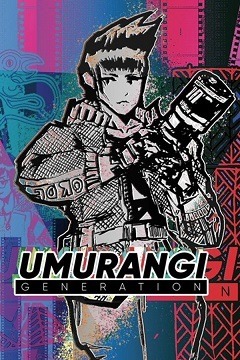
Log in to comment